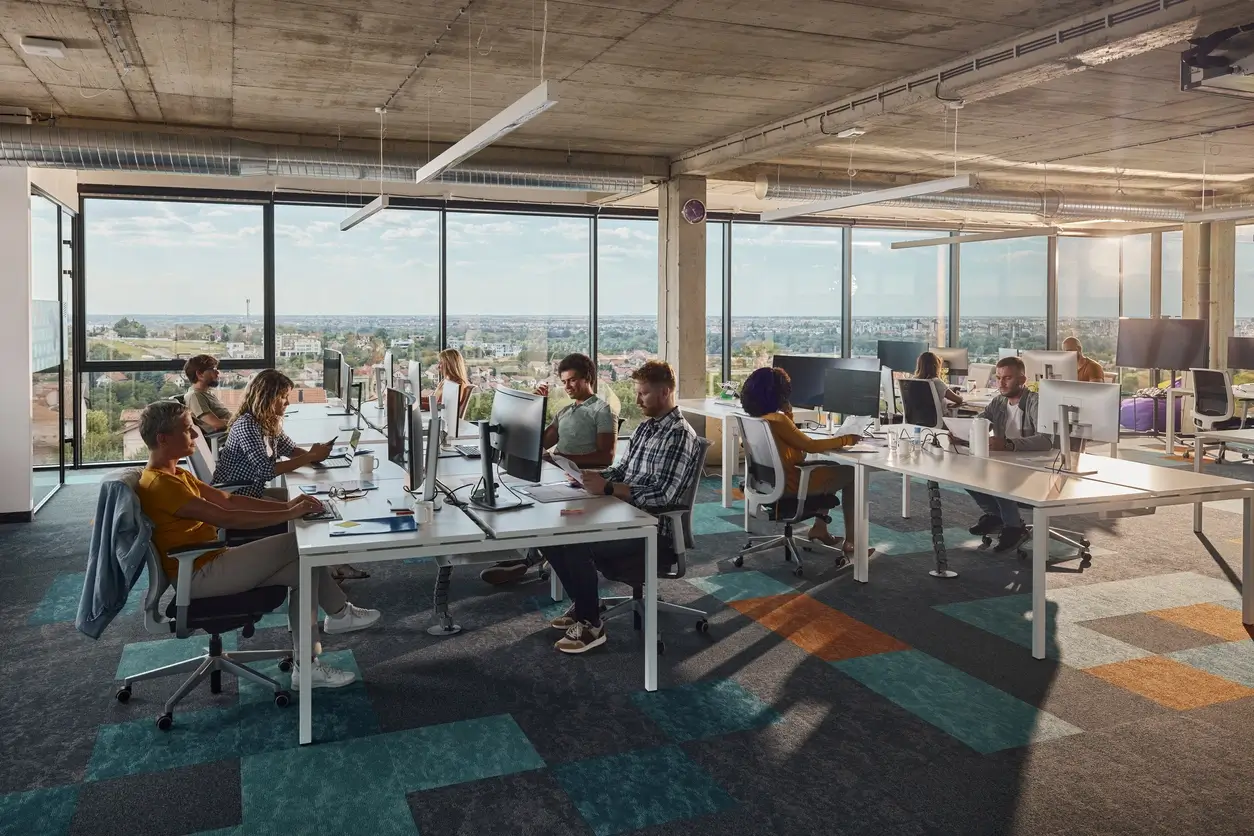9 Out-of-the-box conference room ideas to inspire innovation
Conference rooms are often boring and uninspiring, stifling creativity and innovation. Check out our out-of-the-box conference room ideas that can help to spark creativity and
Read more
Work has changed dramatically in the last few years. Employees are no longer tied to a nine to five routine where they must always be in the office. Today’s hybrid worker is increasingly mobile and because of this office real estate is under-utilized.
Savvy companies are turning to space utilization sensors as a means of optimizing their workplace and for planning ahead. Let’s explore how this technology can drive significant improvements in space utilization while also creating a productive office environment.
Why you need sensor technology
When making strategic decisions about office space, such as ending leases, accommodating growth or consolidation, and planning for new spaces, real estate leaders need to have ready access to accurate and detailed data about space utilization.
That’s where smart building technology comes in. Occupancy sensors and space planning software can be used to collect data on how space is being used, which helps leaders make informed decisions about how to allocate space and improve the employee experience.
Forward-thinking companies are moving away from the traditional model of assigning each employee a desk and are instead embracing flexible working. This approach helps to consolidate space and provide employees with more flexibility to work where they are most productive.
It is essential to collect accurate data on how workspaces are being utilized to ensure that there is enough space to accommodate everyone. Occupancy sensors and other smart building technology such as space management solutions help workplace teams to collect this data and make accurate fact-based decisions about space requirements.
In addition to helping with space planning, occupancy data can also be used to drive location finding tools, such as digital signage, that help employees locate colleagues and places to work in a flexible environment. This can save employees time and frustration and help to create a more efficient and productive workplace.
Here are some specific examples of how sensor technology is used in the modern workplace:
By investing in smart building technology, real estate leaders create a more efficient, sustainable, and employee-friendly workplace.
The power of integration
Different types of sensors and other technologies used to collect workplace utilization data (such as badge swipes and RFID tags) all have their strengths and weaknesses.
No single technology can capture all the data you need to get a true picture of space utilization. That’s why most companies choose to implement a combination of smart building technology solutions to improve the relevancy and usefulness of their workspace analytics.
An integrated workplace management software system can help you to:
By integrating data from multiple sources, you gain a comprehensive view of how your workplace is being used and help you to make informed decisions about how to improve it.
Rendezvous Workspace is one of the leading space management solutions. Combining Rendezvous Workspace with sensor technology gives leaders the best possible data set to measure true meeting room and desk occupancy.
The Rendezvous space management software is designed to make booking desks and meeting rooms a simple process. Thanks to its mobile app, Rendezvous is ideal for today’s hybrid worker looking to get their office workspace organized while they are on the go.
What’s more, it is also a great source of accurate booking and usage data.
Integration of space management solutions with the sensor technology gives a pinpoint accurate view of how rooms are actually being used.
The integration between the space management solutions and sensor technology offers key metrics for improved space utilization particularly around actionable real-time data and live space availability.
Key space utilization metrics include:
Peak usage: The highest number of employees occupying a specific workplace area at a given time, such as a conference room.
Peak frequency: How often an area is fully utilized in a specific period. Tracking peak usage and peak frequency can help you identify office space occupancy patterns. This can help you understand when your workplace is busiest and ensure you have enough space to meet your needs.
Meeting and conference room usage: Shared spaces and conference rooms are becoming increasingly important as the traditional office shrinks. Occupancy sensors can help you understand which areas are being used at any given time and identify patterns. This information can help you make better plans for your workforce.
Average desk occupancy: Knowing your typical room usage and desk occupancy can help you rearrange your office space to meet demand. For example, if your conference rooms are underutilized but your desks are always full, you could consider converting some meeting room space into reservable workstations.
Actionable data at your fingertips
Cloud-based data analytics dashboards provide a single, centralized view of all the data collected by smart building technology whether that is the space management software or
Here are some of the key features of the sensor technology dashboard platform:
Conclusion
Sensor technology is a key part of a wider workplace ecosystem. Integrations with space management systems and other key technology, such as building management systems, enables real estate leaders to create a wonderful employee experience, empowers corporate ESG initiatives while driving improved space utilization:
We would love to discuss how our integrated approach can help you to achieve your goals. Contact us today for an introductory discussion.